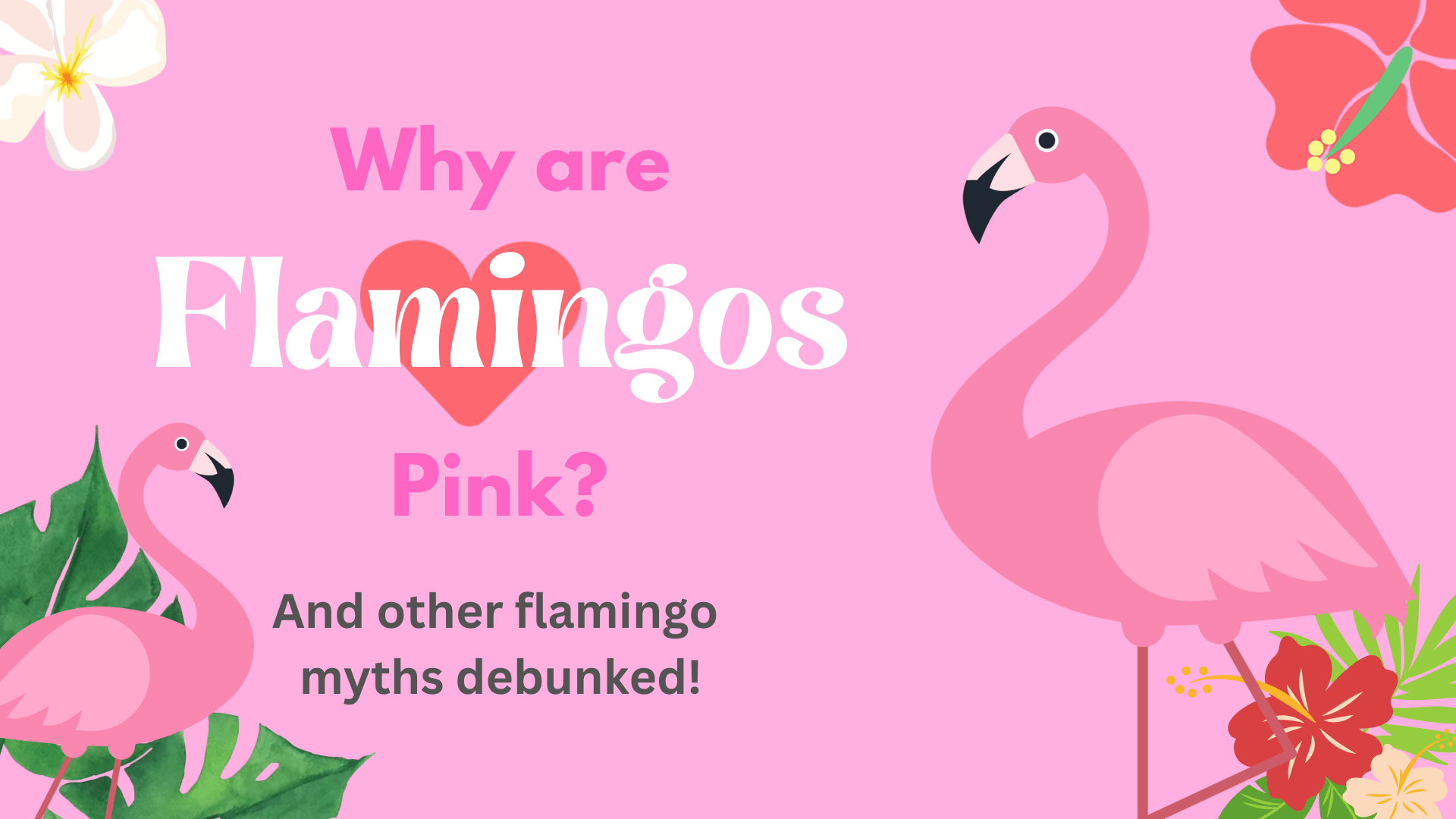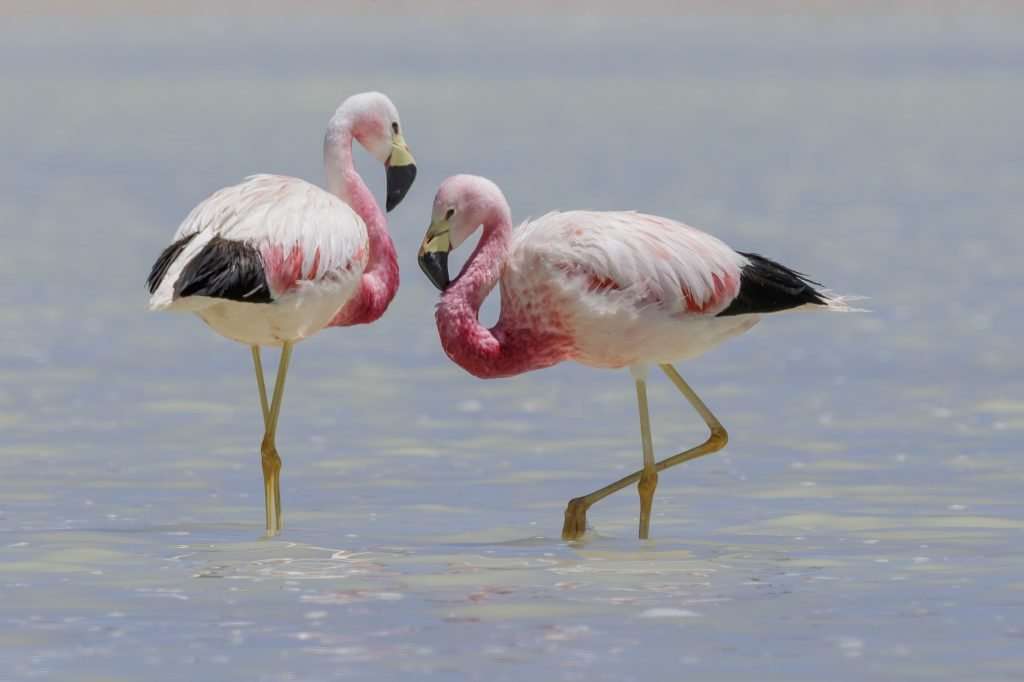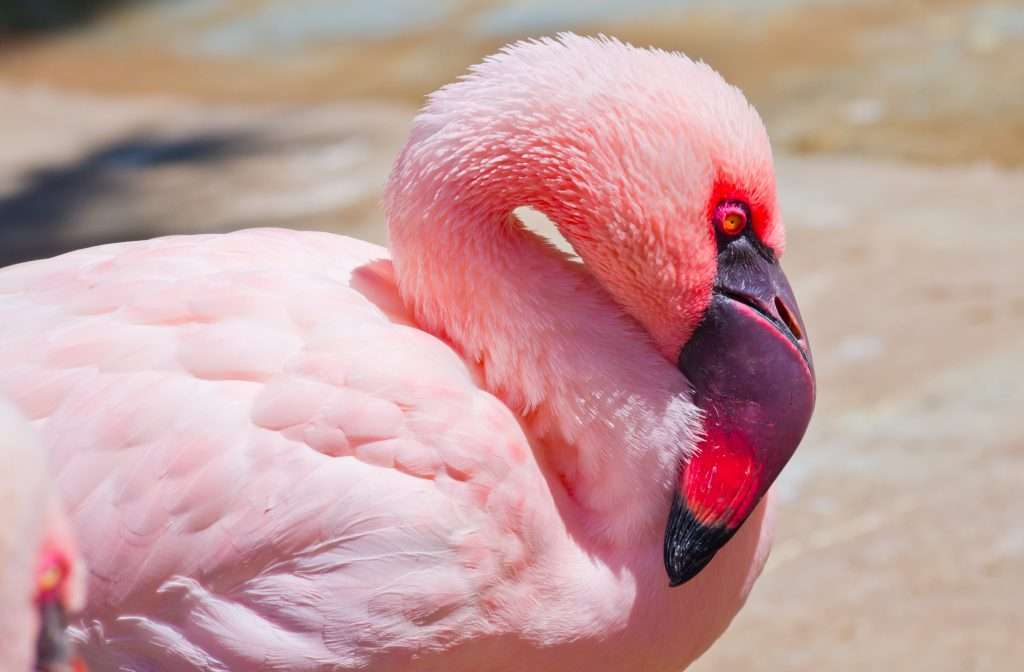
Why are Flamingos Pink?
Flamingo fans, rejoice! International Flamingo Day is just around the corner, and what better way to celebrate these iconic pink birds than by delving into their fascinating world with some exciting flamingo facts? In anticipation of this fabulous day, we’re uncovering some of the most intriguing mysteries surrounding flamingos. From the secret behind their vibrant coloration to their peculiar feeding habits and amazing social lives, we’ll debunk myths and reveal little-known flamingo facts. So, grab your favorite feathered accessory, and let’s dive into the captivating world of flamingos!
The Pink Puzzle – Why Are Flamingos Pink?
Flamingos are famous for their vibrant pink feathers, but do you know what causes this fabulous coloration? It’s all thanks to their diet! Flamingos consume brine shrimp, blue-green algae, and other small organisms that are rich in pigments called carotenoids. These pigments give the birds’ feathers their pink hue. The more carotenoids they consume, the more vibrant their color becomes. So, the next time you see a flamingo strutting its stuff, remember that their fabulous pink color is thanks to some serious shrimp snacking!

One Leg Up – The Mystery Behind Flamingos’ Unique Balancing Act
You’ve probably seen flamingos standing on one leg, and if you’re like most people, you’ve wondered why they do it. While the exact reason is still debated among scientists, the most widely accepted theory is that it helps the birds conserve energy and stay warm. When a flamingo tucks one leg beneath its body, it reduces heat loss by minimizing the amount of exposed skin. Additionally, standing on one leg may require less muscle effort, allowing the birds to rest and conserve energy.

A Beak for the Job – The Secret to Flamingos’ Unusual Feeding Technique
Flamingos have a unique, specially-adapted beak designed to filter-feed their preferred diet of algae and shrimp. Their beaks are curved with a complex structure called lamellae, which allows them to filter water for food. When feeding, a flamingo dips its beak into the water upside down and sucks in water and food. The lamellae act as a sieve, trapping food particles while expelling water. This remarkable feeding adaptation makes flamingos highly efficient foragers in their aquatic habitats.

The Flamingo Flamenco – A Look at Flamingos’ Intricate Courtship Dance
Flamingos are social birds with elaborate courtship rituals that involve synchronized dancing. During breeding season, large groups of flamingos perform impressive, synchronized displays to attract mates. These displays include head-flagging, wing-saluting, and twist-preening, all performed in perfect unison. This mesmerizing dance, known as the Flamingo Flamenco, is essential for establishing pair bonds and ensuring successful reproduction.

Home Is Where the Flock Is – Flamingos’ Communal Nesting Habits
Flamingos build their nests in colonies, often with thousands of birds nesting closely together. These nests are made of mud and constructed in the shape of a mound with a small depression on top. This unique design helps protect the eggs from flooding and predators. Both parents share the responsibility of incubating the egg and raising the chick. Living in large colonies has its benefits, as it provides protection from predators and allows for better access to food resources.

Can’t Get Enough of Flamingos?
From their iconic pink coloration to their fascinating social lives, flamingos are truly one-of-a-kind birds. We hope you’ve enjoyed learning about these fabulous avian mysteries, and that the next time you see a flamingo, you’ll have a newfound appreciation for their unique adaptations and vibrant personalities.

If you’re eager to dive even deeper into the world of flamingos, we highly recommend checking out “Flamingos: The Ultimate Book” – a 100-page colorful guide filled with stunning photos, fascinating facts, and more. This beautifully crafted book is a must-have for flamingo enthusiasts and nature lovers alike, so don’t miss your chance to expand your knowledge and immerse yourself in the captivating universe of these extraordinary birds. So, let’s raise a wing to these incredible creatures and celebrate the beauty and intrigue of the fabulous flamingo! Order your copy here.
Sources
- National Geographic (n.d.). Flamingo Facts. National Geographic Society. Available at: https://www.nationalgeographic.com/animals/birds/group/flamingos/ (Accessed: 11 April 2023).
- Gochfeld, M., & Burger, J. (2020). Flamingo. In: B. K. Keeney (Ed.), Encyclopaedia Britannica. Available at: https://www.britannica.com/animal/flamingo (Accessed: 11 April 2023).
- Anderson, M. J. (2010). The Secret Lives of Flamingos. Smithsonian Magazine. Available at: https://www.smithsonianmag.com/science-nature/the-secret-lives-of-flamingos-89199972/ (Accessed: 11 April 2023).
- RSPB (n.d.). Flamingo. Royal Society for the Protection of Birds. Available at: https://www.rspb.org.uk/birds-and-wildlife/wildlife-guides/bird-a-z/flamingo/ (Accessed: 11 April 2023).
- Cézilly, F., & Johnson, A. R. (2018). Flamingo Behaviour: A Review. Ethology Ecology & Evolution, 30(3), 221-239. DOI: 10.1080/03949370.2017.1410676





